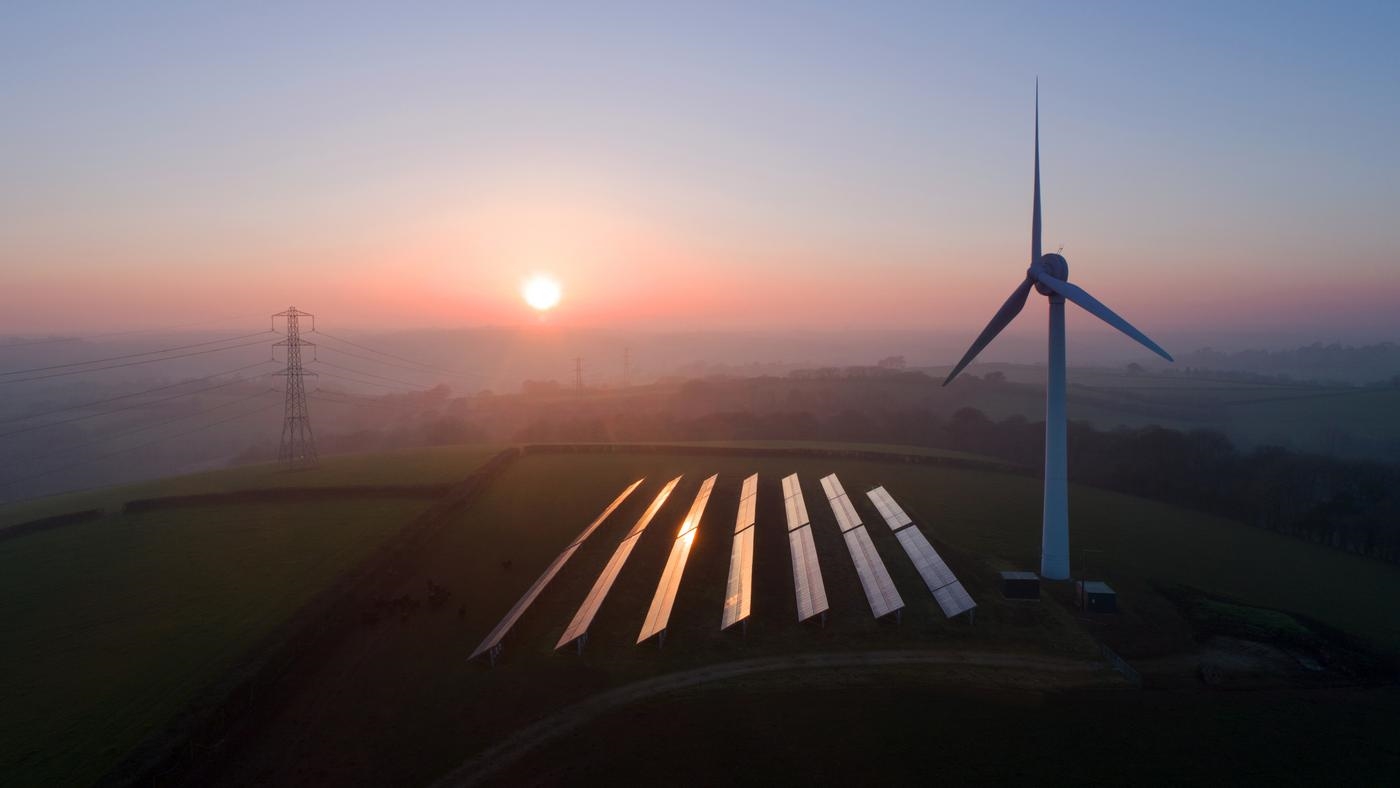Get Ed Crooks' Energy Pulse in your inbox every week
1 minute read
Ed Crooks
Vice Chair Americas and host of Energy Gang podcast

Ed Crooks
Vice Chair Americas and host of Energy Gang podcast
Ed examines the forces shaping the energy industry globally.
Latest articles by Ed
-
Opinion
Keeping cleantech investment alive
-
Opinion
Can energy close US trade gaps?
-
Opinion
Tariff shockwaves shake the energy industry
-
Opinion
How can the power industry meet the challenge of rising demand?
-
Opinion
Is the US being left behind in the race to develop new clean energy technologies?
-
Opinion
US E&Ps look for international growth
US crude production and exports do seem likely to be a less disruptive force in world markets over the next five years than they have been for the past five.

Ed Crooks
Vice Chair Americas and host of Energy Gang podcast
Ed examines the forces shaping the energy industry globally.
Latest articles by Ed
-
Opinion
Keeping cleantech investment alive
-
Opinion
Can energy close US trade gaps?
-
Opinion
Tariff shockwaves shake the energy industry
-
Opinion
How can the power industry meet the challenge of rising demand?
-
Opinion
Is the US being left behind in the race to develop new clean energy technologies?
-
Opinion
US E&Ps look for international growth
Opening the meeting in Vienna this week of the Joint Ministerial Monitoring Committee, which assesses oil markets for OPEC and its allies, Prince Abdul Aziz Bin Salman, Saudi Arabia’s recently appointed energy minister, warned that he was “not a big-time orator”.
He nevertheless managed to make a big statement to the market at the OPEC meetings, securing agreement from the OPEC+ group for another 0.5 million b/d of oil production cuts through March, on top of its existing production restraint of 1.2 million b/d.
As has been the case since Russia and Saudi Arabia started co-operating in the oil market in 2016, their alignment was crucial for the decision. Russia will make an additional cut of 70,000 b/d beyond its current agreed cut of 300,000 b/d, but has gained approval for its request to remove condensate from its quota.
The statements after the meetings, which concluded on Friday, also showed how the OPEC+ group is taking a flexible approach to managing the market. The ministers did not commit to restraint beyond March 2020 until another JMMC meeting is held the first week of March, followed by extraordinary ministerial meetings of OPEC and then the OPEC+ group that same week.
Ann-Louise Hittle, WoodMac’s head of macro oils, warned that the fact that the agreement’s commitment to curb production ran only through to March could reduce its supportive impact on the market. However, she added: “The proactive, short-term management of the market OPEC+ is signalling is supportive overall to the outlook for 2020 and should avoid a significant downturn in prices.”
How to get Energy Pulse
Energy Pulse is Ed Crooks' weekly column, published by Wood Mackenzie every Friday. Here's how to get Energy Pulse:
- Follow us on social media @WoodMackenzie on Twitter or Wood Mackenzie on LinkedIn
- Fill in the form at the top of this page and we'll send you an email when the latest issue goes live
- Bookmark this page to have access to the full archive of Energy Pulse

Saudi Aramco prices
While the OPEC ministers were gathering in Vienna, Saudi Aramco confirmed the price of the share offer that is bringing it to the Saudi domestic stock market. The company had already acknowledged last month that the sale was unlikely to achieve the $2 trillion valuation originally suggested, and in the end the price achieved was at the top of its indicated range at $1.7 trillion.
The price of 32 Saudi riyals ($8.53) per share means that the offer will raise an initial $25.6bn, making it the world’s largest ever IPO ahead of Alibaba’s $25bn float in 2014.
The great shale slowdown
One piece of good news for OPEC recently has been the downward revision in expectations for US oil production over the next couple of years. WoodMac’s latest oil supply outlook, published last week, shows that average US crude output next year is expected to rise by only about 610,000 barrels per day; just half the increase this year of about 1.23 million b/d. As you can see from this chart, the slower growth is expected to persist for the next couple of years.

There are two principal forces driving the slowdown. One is that long-suffering investors, who have poured cash into the US E&P sector for more than a decade, are finally cutting off the flow of capital, and companies are being forced to curtail their ambitions. We expect capital spending in the US oil industry to be slightly lower next year than it has been this year. Secondly, the remarkable gains in productivity that have characterised the US shale oil industry for most of its short history appear now to be coming to an end. Output per foot of well has been stagnating for a while.
The outcome is not that the North American oil boom is about to turn into a bust. But US crude production and exports do seem likely to be a less disruptive force in world markets over the next five years than they have been for the past five. The prospect of US production hitting a plateau after 2024, as WoodMac’s forecasting predicts, is getting closer.
Climate talks in Madrid
The other big energy-related meeting of the week was the start of COP 25, the 25th Conference of the Parties to the UN Framework Convention on Climate Change. The meeting, which is scheduled to conclude next Friday, had inauspicious origins. It was originally going to be held in Santiago, Chile, but at the end of October the Chilean government asked for it to be relocated to Madrid, following sustained unrest in their country.
On the meeting’s agenda, a deal on implementing Article 6 of the 2015 Paris agreement was identified as a top priority by António Guterres, secretary-general of the UN. Article 6 covers ways that countries can work together to cut emissions more effectively, including through trading systems, which could be a step towards an international price on carbon. It is not surprising that the “rulebook” for Article 6 has still not been agreed four years after the Paris COP. However, the details of how it takes effect could make a huge difference to how far countries go to curb their emissions. Kelley Kizzier of the US Environmental Defense Fund wrote that the integrity of the Paris agreement was hanging “in the balance”, depending how Article 6 is implemented.
The disagreements in Madrid, however, are likely to be just a warm-up for next year’s COP, which will be held in Glasgow in November. The 196 countries that signed up to the Paris agreement are supposed to make revised commitments to curbing emissions. That will start to bridge the gap between the pledges they have already made, and the goal of keeping the rise in global temperatures “well below” 2 °C. If COP 26 fails, achieving that Paris goal would probably become impossible, instead of just very difficult.
The Global Carbon Project, an international consortium of scientists, this week published new research showing that the world’s greenhouse gas emissions are not yet starting to turn down as they would have to meet the Paris goal. Global CO2 emissions from fossil fuels are projected to be about 0.6% higher this year than last, and fully 4% higher than when the Paris agreement was signed four years ago.
Repsol raises the bar for emissions cuts
Repsol of Spain has become the first international oil company to set an objective of having “net zero” carbon emissions by 2050. It is a particularly ambitious goal because it includes what are known as “scope 3” emissions, created by the oil and gas the company produces. Valentina Kretzschmar, WoodMac’s research director for corporate analysis, said the company had “leap-frogged” the oil Majors with its commitment. She added: “The ‘mini Major’ has effectively thrown down the gauntlet to its larger cousins.”
The majority of the reduction to zero net emissions is planned for the 2040s, giving the company time to develop and refine the technologies it will need to reach its objective, including carbon capture, use and storage. Ben Storrow of E&E News argued that the timetable “indicates the company is seeking a gradual evolution of its business rather than a radical rewrite.”
Still, the shift in the company’s strategy is already having an impact, as it has revalued its oil and gas assets for a scenario in which the world moves to achieve the goals of the Paris climate agreement. As a result of that revaluation, Repsol is planning to take a post-tax non-cash accounting charge of about $5.3 billion for writing down some of its assets.
WoodMac’s Kretzschmar concluded that Repsol’s new strategic framework could be a sign of what lies ahead. “Governmental, regulatory, investor and consumer pressures are only heading in one direction,” she wrote. “More companies will be forced to align their portfolios with climate goals. Repsol has seized the initiative, establishing itself as an industry leader in the fight against climate change.”
In brief
Sustainable finance is “bogged down with pledges and initiatives, and hindered by a lack of agreed-upon measurements, standards and disclosure”, Euromoney concluded after an investigation into the sector. Separately, the chief executive of Italy’s largest lender warned that using regulation to encourage banks to do more green lending posed a threat to financial stability.
TCI, the activist hedge fund, plans to vote against company directors that fail to disclose their businesses’ greenhouse gas emissions, and has called for asset owners to fire fund managers that do not insist on climate transparency.
The political momentum in China behind moving away from fossil fuels appears to have been fading recently. This week, however, the government increased the ambition of its goal for electric cars, saying it wanted “new energy vehicles” to make up about 25% of all sales in 2025. The objective has been set as China’s oil imports are soaring.
The EU, meanwhile, has been working hard to build its own electric car industry, including a battery supply chain. The efforts come as the global car market is shrinking at its fastest rate since the financial crisis.
About four million Venezuelans have fled the country to escape its deepening economic and political crisis. The Council on Foreign Relations published a useful guide to the policy positions of US presidential candidates relating to Venezuela and the rest of South and Central America.
The American Petroleum Institute’s Environmental Partnership marked its second anniversary. The group said the 69 oil and gas companies that are its members, which between them are responsible for about one-third of US production, had replaced or removed 31,000 high-bleed pneumatic controllers to cut methane emissions from their operations.
Eskom, South Africa’s state-owned power company, has announced another round of blackouts caused by “high levels of unplanned breakdowns”.
And finally: The Crown, the Netflix drama series about Queen Elizabeth II, offers some perceptive insights into modern British social and political history alongside the royal soap opera, occasionally including aspects of energy policy. The first season had a powerful depiction of the Great Smog that blanketed London in 1952, and the recently-released third season has an even more disturbing episode on the Aberfan disaster of 1966. A coal waste tip above the village of Aberfan in south Wales slid downhill after heavy rain, burying houses and a school and killing 144 people, 116 of them children. The official tribunal of inquiry blamed “ignorance, ineptitude and a failure in communications” at the state-owned National Coal Board for failing to prevent the disaster.
Smart reads
- Simon Flowers — OPEC‘s challenge in 2020: balancing an oversupplied oil market
- Julian Lee — Twilight in the Permian weighs on OPEC’s big decision
- Akif Chaudhry — Could the oil Majors take a fast-track route to lower emissions intensity?
- Gavin Thompson — IMO 2020 is about to get real
- Ian Thom — Deepwater rising: The state of the global deepwater industry
- Jay Inslee — How states are leading on climate action
- Jeffrey Sachs — Getting to a carbon-free economy
- Rauli Partanen — Is Germany blocking nuclear because of gas?
- Nick Butler — Election rhetoric that damages the climate debate
- Jim Krane — Houston, you have a problem: climate change
- Jamie Smyth — Sydney bushfires are beginning to spark political conflagrations
- Nils Pratley — BlackRock's Larry Fink must think again over tackling climate crisis
Quote of the week
“Once the election occurs — and the president seems to be in very good shape for the election — once it occurs and he’s back in, now that’s no longer a distraction that can detract from our negotiating position.” — Wilbur Ross, US commerce secretary, explained President Donald Trump’s suggestion that he might wait until after next year’s election to resolve the trade dispute with China.
The comments from Trump and Ross drove down oil along with stock markets for a while, until crude prices were steadied by the speculation about possible additional production cuts from OPEC and its allies.
Chart of the week
Switching from coal to gas as a fuel for power generation has had a significant impact on US greenhouse gas emissions, raising the prospect that other countries might be able to make similar reductions by importing more LNG. However, WoodMac’s Nicholas Browne pointed out in a recent note that LNG is in general one of the higher-carbon forms of oil and gas resources. This chart shows that only oil sands and other types of heavy oil have higher average emissions for an equivalent energy content. The case for using LNG for power and transport can still be compelling because of its beneficial impact on local air pollution, and the latest studies suggest that China could cut greenhouse gas emissions by using imported US gas instead of domestic coal. But as Browne says, pressure from gas buyers and investors is likely to mean that LNG suppliers will have to provide more visibility about their emissions, and take steps to reduce them.

Coming next
The COP 25 meeting is scheduled to conclude next Friday. The critical decision on Article 6 mentioned above is likely to be the main focus of attention. As the record of past COPs shows, the meetings often go beyond their scheduled end. Given the sensitivity and significance of the questions being discussed, it will be no surprise if this one drags on into Saturday.







